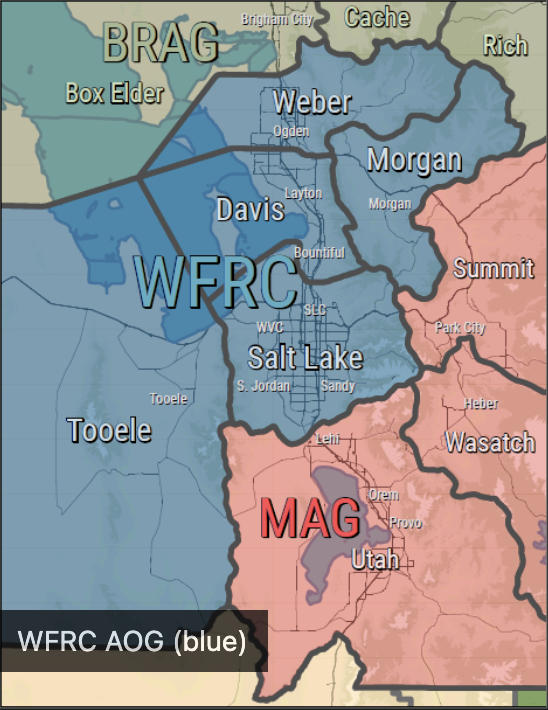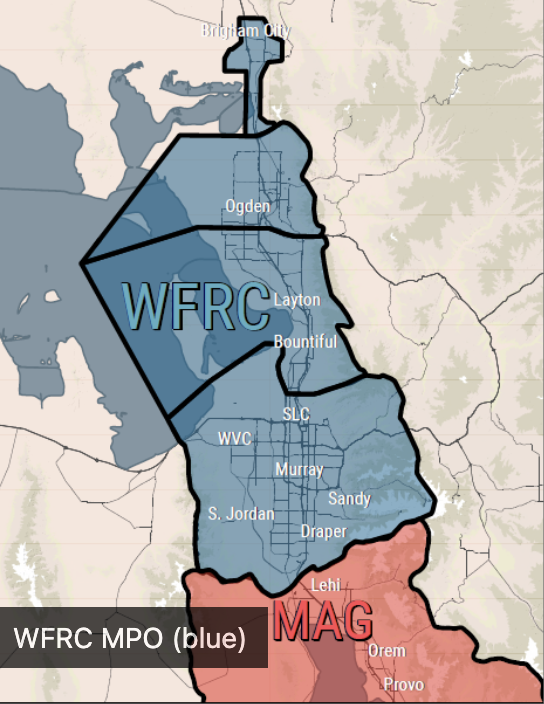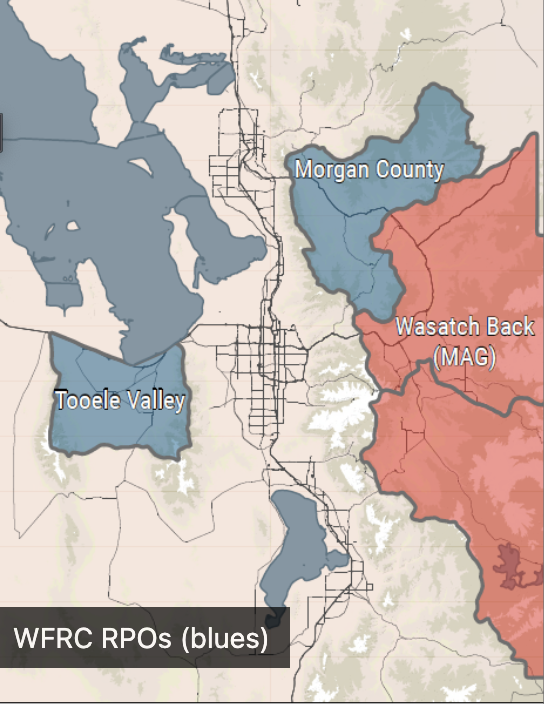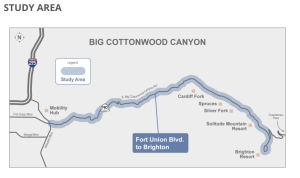Spencer Shaver
Save Our Canyons Litigation Update: Fighting to Stop the Gondola in Little Cottonwood Canyon
Save Our Canyons recently reached another critical milestone in our ongoing litigation against the Utah Department of Transportation (UDOT), with respect to our efforts to stop the proposed gondola in Little Cottonwood Canyon. After months of anticipation, we have received the Administrative Record from UDOT—an extensive collection of over 200,000 pages of documents. This trove includes every decision, report, public comment, environmental analysis, and technical study that UDOT has relied upon in its process to justify building the gondola and will be the basis for the court’s review. Between now and the end of the year, our attorneys will work to ensure that this record is complete and accurate, including seeking additional documents, if any, that UDOT has improperly withheld.
Why the Administrative Record is Important
The Administrative Record is an essential piece of our legal case. It contains all the foundational documents and analyses that UDOT has used to make its Record of Decision, selecting the gondola as the preferred alternative to address transportation issues in Little Cottonwood Canyon. Reviewing these 200,000 pages will enable our legal team to critically evaluate every step UDOT took to justify this decision, highlighting any missteps, oversights, or violations of the National Environmental Policy Act (NEPA). This deep analysis is crucial for building our case to show that the gondola project is not only an unsound solution but also one that unlawfully undercuts the interests of our community and our public lands.
The sheer volume of this documentation underscores the complexity and significance of this case. Our team of attorneys will be combing through thousands of pages to identify every detail that supports our arguments, from flawed environmental impact statements to disregarded public input.
Protecting Little Cottonwood Canyon and the Community
The gondola proposal presents numerous threats to the unique environmental and recreational value of Little Cottonwood Canyon. If built, it would cut across this one-of-a-kind landscape, harming its scenic views, disturbing wildlife, and impacting wetlands and water resources. Additionally, the gondola’s price tag (estimated to cost Utah taxpayers up to a billion dollars) calls into question the long-term value of such a project, especially when alternative, less invasive solutions could achieve the same transportation goals.
We are committed to ensuring that Little Cottonwood Canyon remains accessible to everyone, not only to those who can afford the substantial price of gondola tickets. We believe that transportation solutions should benefit all canyon users, including hikers, climbers, backcountry skiers, and families who enjoy the canyon for its natural beauty and solitude.
UDOT’s Hypocrisy - Land Acquisition at the base of LCC
UDOT is currently negotiating a land acquisition near the proposed gondola base station in Little Cottonwood Canyon, purchased using a right-of-way preservation fund to acquire what could become additional parking near the base station. Despite UDOT’s assurances that it cannot advance any part of the gondola project while litigation is ongoing, these acquisitions reveal a different reality—one where UDOT appears to be quietly laying the groundwork for future construction and placing a thumb on the scale in favor of UDOT’s preferred alternative. This underscores the urgency of Save Our Canyons' litigation and reinforces why we must press forward with our efforts to protect the canyon from unnecessary development.
This situation also emphasizes the need to hold UDOT accountable for exploring realistic, canyon-compatible transportation alternatives before resorting to the gondola. We must continue urging elected officials to establish clear metrics for bus and toll-based solutions. If effective, these would eliminate the need for a costly gondola that disrupts the canyon’s unique environment and character. Additionally, we must ensure that no new public funding is appropriated for gondola-related expenses during the upcoming legislative session, protecting taxpayer dollars from being funneled into an unsustainable project.
Why We Need Your Support Now More Than Ever
The battle to protect Little Cottonwood Canyon from the gondola is no small feat, and our legal campaign to challenge UDOT’s decision is both time-consuming and financially demanding. Reviewing the Administrative Record alone requires dozens of hours of skilled legal work, not to mention the additional costs associated with filing court documents and preparing for court hearings.
That’s where we need your help. As a 501(c)3 nonprofit, Save Our Canyons relies on the generosity of individuals like you who care deeply about the Wasatch Mountains. By donating today, you can directly support our litigation efforts and help us defend Little Cottonwood Canyon from this unnecessary and damaging project. Every dollar donated goes directly toward protecting our canyons, sustaining our legal work, and standing up against powerful interests that seek to profit at the expense of our public lands.
How You Can Help
Now is a critical time for Save Our Canyons and for Little Cottonwood Canyon. By making a donation today, you become a part of this historic effort to safeguard one of Utah’s natural treasures. Whether you can give $25, $100, or more, every contribution strengthens our ability to see this case through. We invite you to join us in this fight, stand with us in protecting the Wasatch Mountains, and make your voice heard.
Together, we can preserve Little Cottonwood Canyon as a place of solace, beauty, and adventure, free from the threat of unsustainable development. To donate and learn more about our case, please visit our donation page at SaveOurCanyons.org and follow our progress as we continue this critical fight for our public lands in Little Cottonwood Canyon and across the Wasatch Mountains.
Big Cottonwood Canyon Transportation Improvements: Environmental Review
UDOT has started an Environmental Study focused on Big Cottonwood Canyon to address wintertime congestion. Now through December 13th, submit a comment to UDOT using the form below. Looking for inspiration about what to include in your comment? Read on below for what you can include to ensure our UDOT's study prioritizes low-impact solutions which prioritize protection of Big Cottonwood Canyon's landscape throughout the process.
Now is your chance to shape the outcome of proposed transportation projects affecting the Wasatch Front. Read our blog below to learn more about the Wasatch Front Regional Council’s 2025-2030 Transportation Improvement Program (TIP). Don’t wait, submit a comment today to directly participate in implementing more sustainable, equitable transportation options to the Wasatch Mountains! Our blog contains sample language to help you write your comment, too!
What is the Wasatch Front Regional Council (WFRC) and why should you send a comment before August 3rd?
Transportation planning in the Wasatch Mountains is a cooperative effort of federal, state, and local agencies. The Wasatch Front Regional Council (WFRC) is responsible for coordinating this transportation planning process as the designated Metropolitan Planning Organization (MPO) for the Wasatch Front.



The Wasatch Front Regional Council’s Service Area, pictured above. Also pictured are service areas for the Mountainland Association of Governments and the Cache MPO.
Supporters of Save Our Canyons will remember - last year, we organized at the WFRC meeting where the proposed Gondola in Little Cottonwood Canyon was added to WFRC’s Regional Transportation Plan. Many of you were there in person, and thousands submitted comments and tuned in online to demonstrate their opposition to the Gondola. While the proposed Gondola has not been included in the 2025-2030 Transportation Improvement Program, it’s critical we continue to advocate for lower-impact solutions to congestion, like bussing and congestion-based tolling, which are included in the 2025-2030 TIP, as a way of proactively preventing the Gondola, so that low impact solutions have the opportunity to be implemented and funded before a Gondola plan is ever realized. To be clear, the Gondola is still included as a project in the WFRC’s long range planning process (the Regional Transportation Plan), but because the TIP is a function of short-range planning, and gondola implementation is expected around 2040 (outside of the TIP's range of planning), the Gondola is too far from implementation to consider at this point.
What is the difference between the WFRC’s Regional Transportation Plan and the Transportation Improvement Program?
The Wasatch Front Regional Council's Regional Transportation Plan (RTP) is a long-term strategy that outlines transportation projects and goals for the region over a 20 to 30-year period. It addresses future transportation needs and prioritizes projects based on anticipated growth, land use, and economic trends. In contrast, the Transportation Improvement Program (TIP) is a short-term plan that lists specific projects to be implemented over the next four years. The TIP is essentially an actionable subset of the RTP, detailing the projects that have secured funding and are ready for construction or development. While the RTP focuses on strategic, big-picture planning, the TIP provides a more immediate, tactical approach to achieving those goals. The RTP is a long-range planning tool, where the TIP is a short-range plan to enact the larger goals laid out in the RTP.
Where should I submit a comment to the WFRC’s comment period?
You are invited to comment on individual projects proposed in the TIP, either on WFRC’s story map, located here.
Or through WFRC’s general comment form, located here.
What should I say in my comment?
We encourage you to personalize your comments and offer project specific comments. Please feel free to use the following short comment from Save Our Canyons as a baseline, but comments which are exact copies will only be considered as one comment by the WFRC. It advocates for implementation of enhanced bus service in Big and Little Cottonwood Canyons and congestion-based tolling, ensuring equitable access and preventing overuse by incentivizing tolling.
Suggested comment:
“Dear Wasatch Front Regional Council Short-Range Planning Team,
Thank you for the opportunity to comment on the Draft 2025-2030 Transportation Improvement Program (TIP). As an advocate for the Wasatch Mountains, I support the implementation of enhanced bus service and congestion-based tolling in both Big and Little Cottonwood Canyons, ensuring equitable access and preventing overuse by incentivizing tolling. I urge that the $150 million from the Legislature and $42 million from the Recreational Hot Spots Program be strictly allocated to projects identified in phases 1 and 2 of the LCC EIS process, such as bussing, tolling, and mobility hubs, as outlined in the TIP. Metrics for success should be established for these projects to ensure accountability and guide future phases. Transparency with the public about these metrics is crucial for fostering trust and achieving the desired transportation improvements.”
Still want to know more about the process? Read Save Our Canyons long form comment here, for inspiration!


